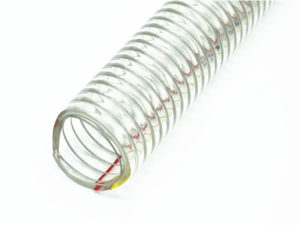Plastic processing industry is a comprehensive technology industry. It involves polymer chemistry, polymer physics, interface theory, plastic machinery, plastic processing mold, formula design principle and process control and so on. The relationship between the three physical states of the polymer in the extruder and the screw structure, plastic properties and processing conditions is discussed. So as to carry out reasonable process control. In order to improve the output and quality of plastic products.
The extrusion method of the plastic extruder generally refers to the melting of the plastic at high temperatures of about 200 degrees. The melted plastic then passes through the mold to form the desired shape. Extrusion molding requires a profound understanding of the characteristics of plastics and rich experience in mold design. It is a molding method with high technical requirements. The function of the plastic extruder is to transform the solid plastic into a uniform melt by heating, pressing and shearing, and to deliver the melt to the next process. The production of melts involves additives such as mixed color masterbatch, blending resin and regrinding. Compared with other molding methods, it has the advantages of high efficiency and low unit cost.
Extrusion process is mainly used for molding thermoplastic plastics and also for some thermosetting plastics. The extruded products are continuous profiles, such as pipes, bars, wires, plates, films, wire and cable cladding, etc. In addition, it can also be used for mixing, plasticizing, granulation, coloring and blending of plastics. Extruded products can be called “profiles”, because most of the cross-sectional shape is irregular, so it is also called “profiles”.
